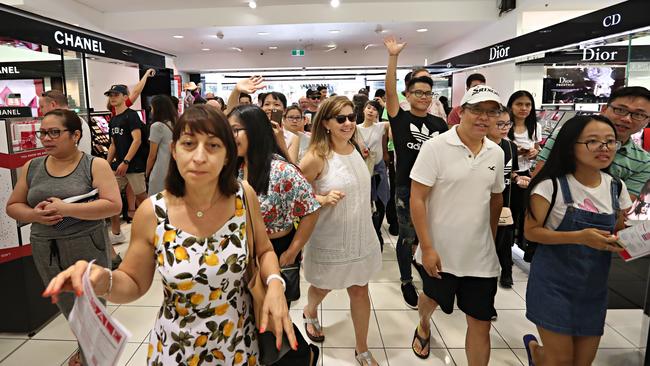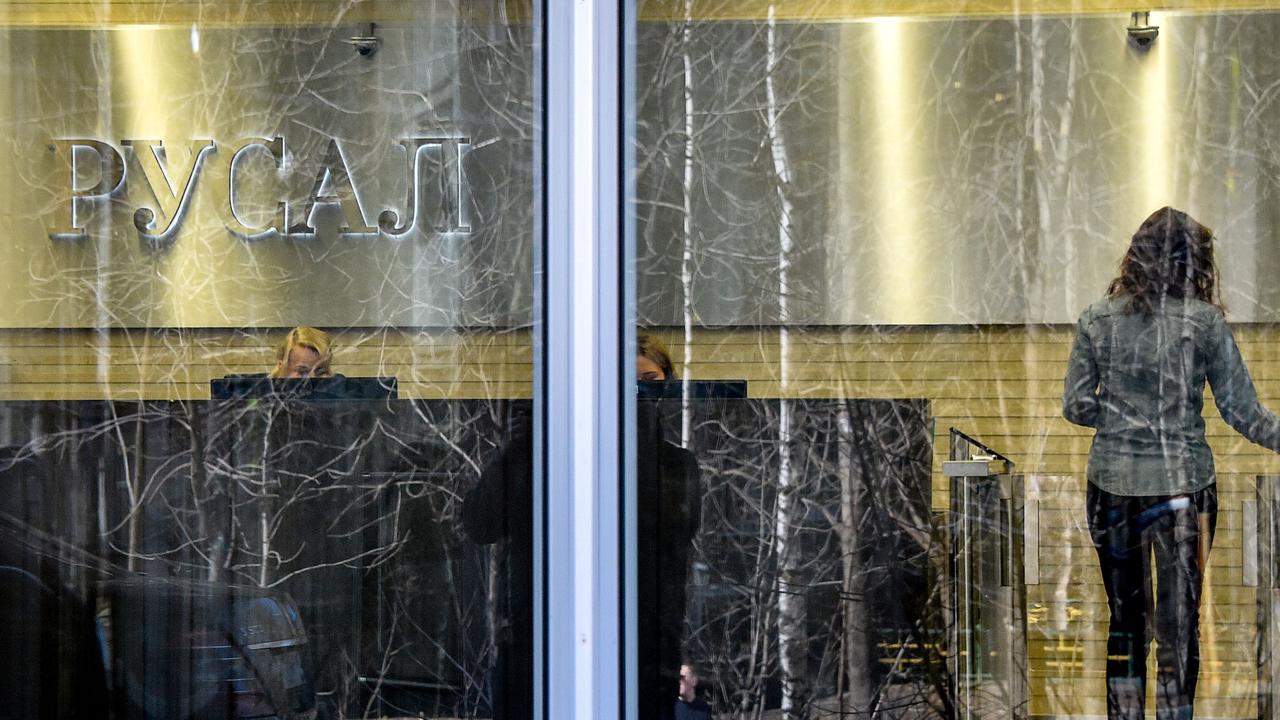Myer under growing pressure to deliver on its strategy
So far, two years in, the New Myer strategy isn’t delivering the sales or earnings growth it was supposed to.

Given the difficulties being experienced within the department store sector — Myer’s most direct rival David Jones suffered a 25 per cent decline in earnings while the discount department store sector is, with the exception of Kmart, struggling for survival — the result could perhaps have been worse.
On sales that were down 1.4 per cent, or 0.2 per cent on a comparable stores basis, Myer generated a profit before significant items of $67.9 million, at the lower end of its guidance range of $66 million to $70 million.
Two years into the execution of the New Myer strategy isn’t delivering the sales or earnings growth that was supposed to be under way by now.
It has, however, at least broadly stabilised its comparable stores sales base and earnings within a torrid environment for discretionary retailers.
Moreover, there have been considerable and continuing changes to the structure of the business as it continues to shift towards a more complex but ultimately more rational retail strategy, founded on stocking what customers in particular regions actually want to buy rather than a one-size-fits-all offer based largely on what the group itself can buy rather than what it can sell.
The new model involves a big shift in mix from Myer’s exclusive brands to concession sales, a shift away from buying for markdowns in the big sales periods and a significant reduction in the group’s network of stores and in selling space.
The latest result reflected those themes within its strategy. Concession sales were up 17 per cent to $702 million, Myer exclusive brand sales were down 10.4 per cent. Since the launch of the strategy in 2015 Myer has shed more than $100 million of annual sales of its exclusive brands but added $200 million of concession sales.
Those concession sales are lower margin but also lower cost, which shows up in the group’s gross profit margin, which fell 58 basis points to 38.12 per cent (40.4 per cent in 2015) and its cost of doing-business, which was down 54 basis points to 31.85 per cent (33.4 per cent in 2015).
While Myer is investing to try to improve the performance of its smaller portfolio of exclusive brands, ultimately the shift in mix is being customer-driven.
Within a fleet of stores that runs from flagship to regional stores, implementing an offer that is tailored to regional demographics was never going to be easy and has been complicated, made more costly and taken longer than ideal because of the length of the leases within the network.
Nevertheless, having originally decided not to continue with three planned new stores, Myer closed three stores during the financial year and handed back significant space at two others. This financial year it says it will close three more stores.
From the launch of the strategy to the end of this financial year Myer will have cut its total footprint by about 10 per cent. The productivity of its residual retail space has been improving as it sheds the less productive stores, albeit perhaps at a slower rate than originally envisaged. Sales per square metre were up 3.7 per cent last financial year.
The 2018 financial year hasn’t opened well, with Myer saying sales for the first six weeks have been below expectation. It’s not a critical period, however, with the first half outcome dependent on the Spring Carnival and, obviously, Christmas periods.

The one area of Myer where it is gaining traction and generating real growth is in its online and omni-channel platforms.
A big increase in the range of products online and a big improvement in fulfilment were factors in an increase in online sales of more than 40 per cent. Omni-channel sales totalled $177 million, including sales from the group’s in-store iPads.
Growth in earnings before interest, tax, depreciation and amortisation was, encouragingly, in line with the sales growth as Myer managed a reduction in the costs and time of fulfilling online orders.
Myer said its omni-channel sales represented about 8.2 per cent of sales in July this year. If sustained, the growth in the omni-channel sales will push Myer up towards the levels of better performing “bricks and clicks’’ retailers offshore.
Given the imminent arrival of Amazon in this market, it was and remains imperative that Myer and other discretionary retailers upgrade their online presence and leverage their physical store networks. Myer is trialling same-day and next-day delivery options and continue to invest in improving its omni-channel offer and capabilities.
It is also trying to better exploit and leverage the vast amounts of customer data and insights latent within its Myer One loyalty program, which represents a very significant and strategic asset in a digital environment — a significant element of Amazon’s success lies in its ability to use its data to personalise offers and to “upsell’’ to customers buying or browsing on its platforms.
While the “new’’ Myer eschews buying for promotional markdowns and promotional discounting more generally, it did experiment with a dedicated clearance floor at its Frankston stores, with “encouraging’’ results.
Since the trial, foot traffic and total transaction values across the entire store have risen, while space has been released at other stores in the network. Myer has now introduced clearance floors in eight other stores. It makes a distinction between cycles of discounting to drive sales and clearance of excess stock, although it also says it will maintain the key stocktake sales.
As it nears the halfway mark of its five-year plan the external demands for Richard Umbers and his team to kindle some momentum in a business whose sales have flatlined, at best, for a decade or more will inevitably ratchet up. At present, Myer seems to be running hard to stand still, or at least to keep any attrition to modest levels.
While that has to be seen in the context of the wider sector and the challenges it has experienced in the post-crisis period, challenges that are still mounting, the near-halving of the Myer share price since the start of this year by itself exerts considerable pressure on the group’s board and management to demonstrate that the strategy can deliver.
As if that weren’t sufficient, there’s also, of course, the presence of Solomon Lew’s Premier Investments on Myer’s register, with a 10.8 per cent shareholding, to ensure the Myer team remains focused.
While not necessarily inimical to the incumbents — Lew is thought to have put his foot on a loose shareholding earlier this year to take it, and Myer, out of play for anyone else — Myer will be conscious that its share price slump isn’t going to make him happy and could make the existing board and management vulnerable.





Richard Umbers was explicit in stating his disappointment with the Myer results for the year to the end of July, with the department store group coming in at the low end of its guidance range and undershooting the target metrics within its five-year “New Myer’’ strategic framework.